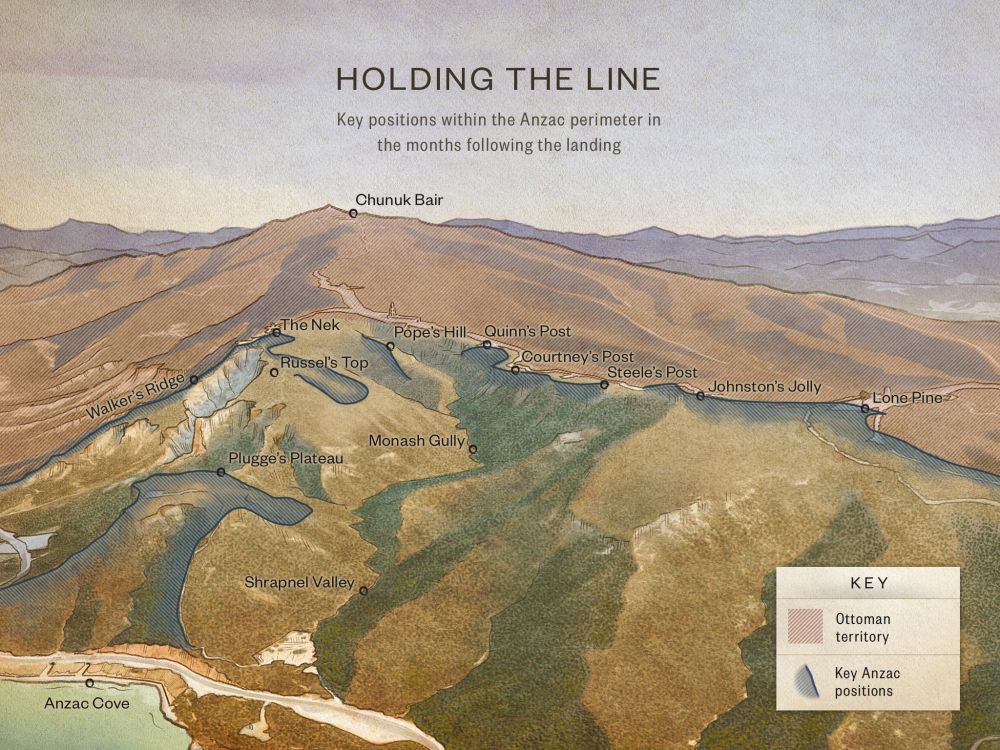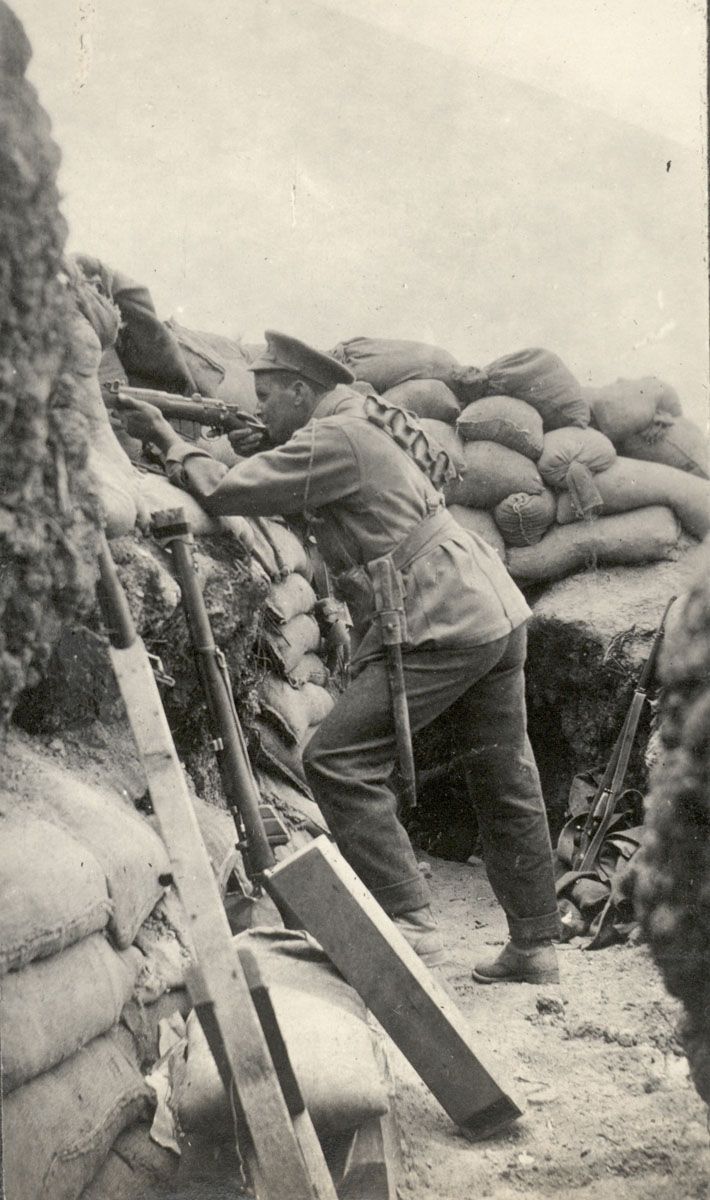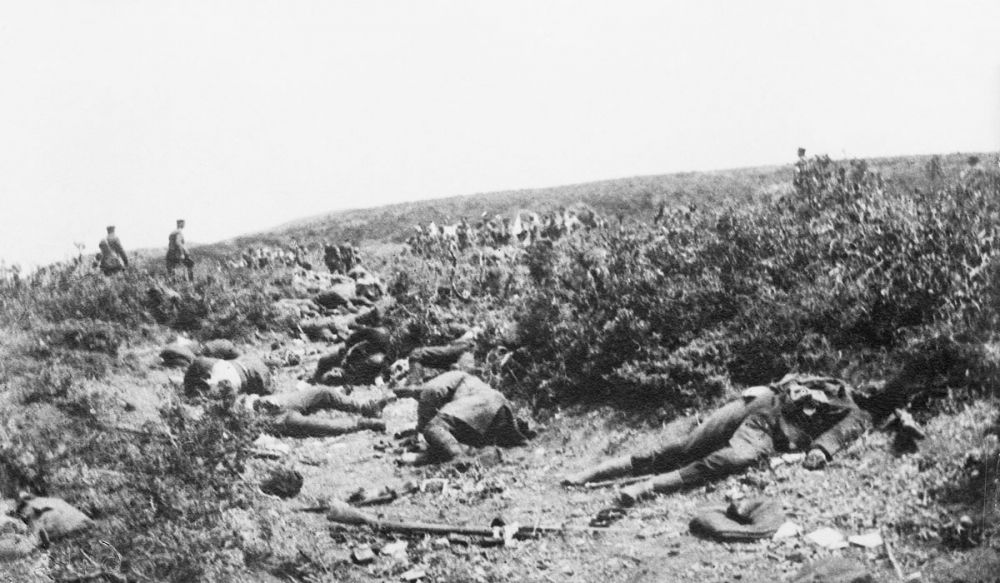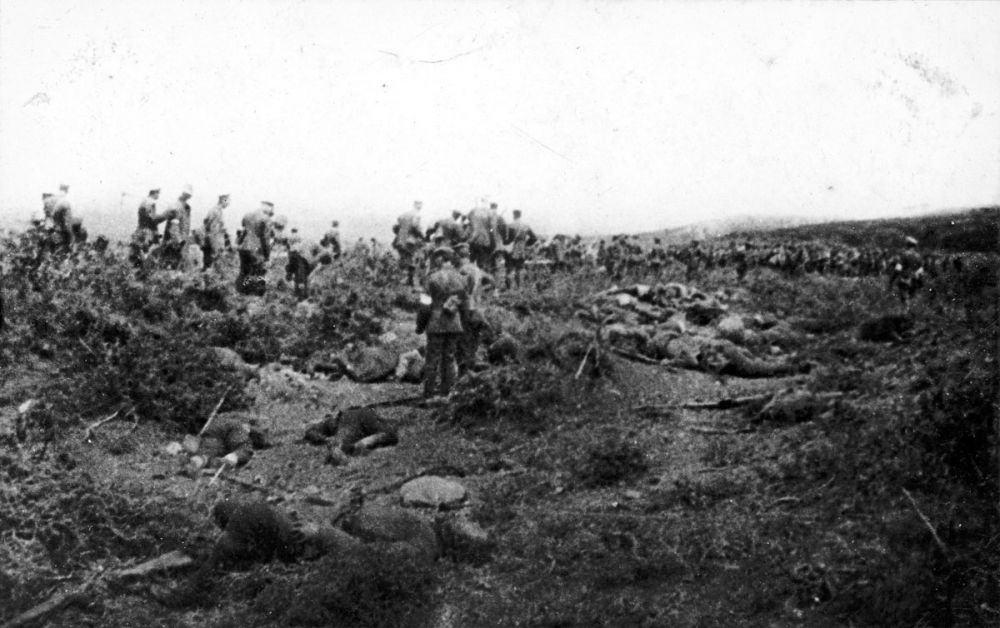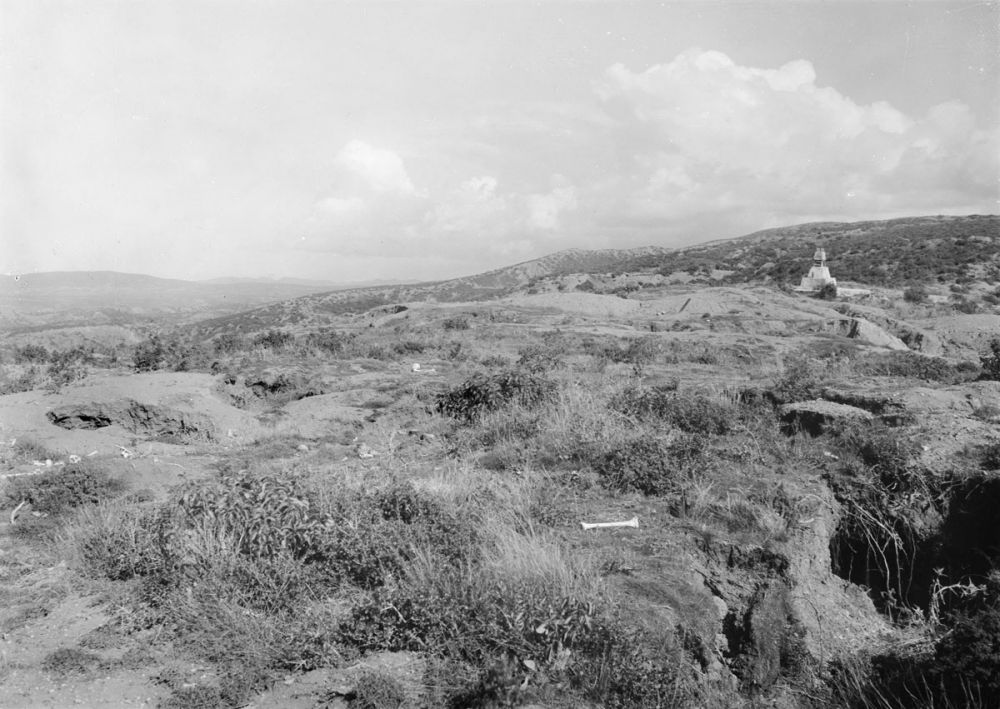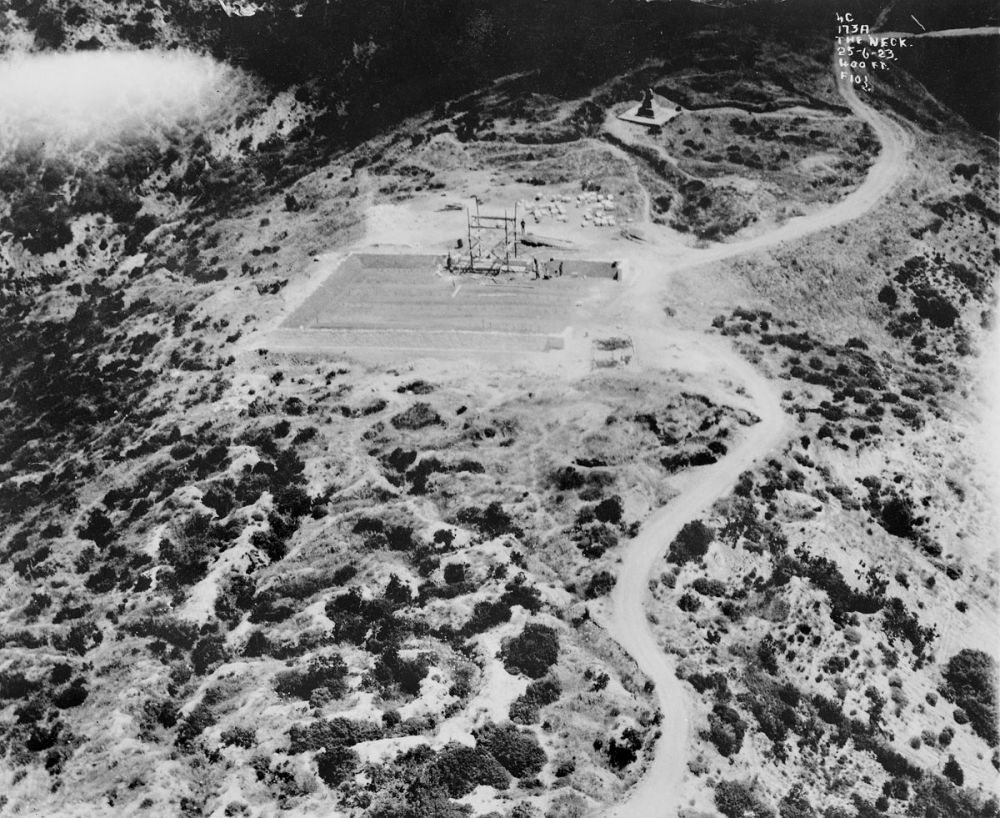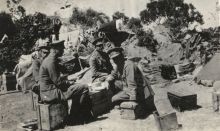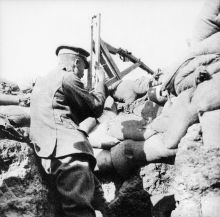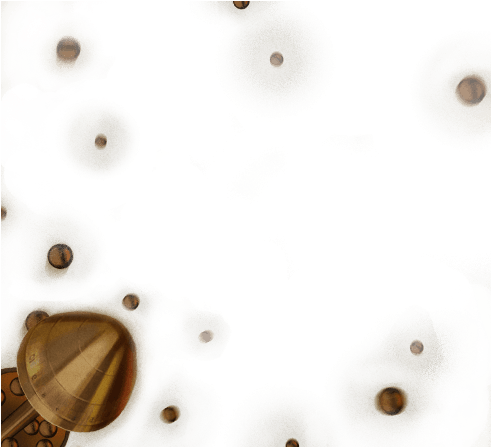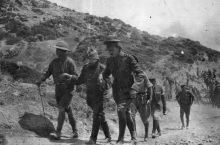The Nek
You’re standing at the Nek. It is the point where the ridge known as Russell’s Top links up with the hill Baby 700 at the narrowest point. Just beyond this hedge in front of you was no-man's-land, now the Commonwealth War Graves Cemetery, and behind that, where the Turkish monument is, the Ottoman front line.
These trenches around you, and the communication trenches behind them, go all the way back to Walker’s Ridge. This is a great piece of ground because you can see the trenches more or less as they were back in 1915. After listening to this talk, don’t just stay at the front trench – work your way back through these cleared trenches. See how deep they are a hundred years later, and visualise the New Zealand Mounted Rifles, with engineers supervising, gradually digging their way forward.
After landing at Gallipoli on the 25th of April 1915, the New Zealanders established a front line here. It was named Russell’s Top because Brigadier General Andrew Russell, the commander of the New Zealand Mounted Rifles Brigade, had his headquarters back behind you, just near the Walker’s Ridge cemetery.
On the night of the 19th of May 1915, a major Ottoman counterattack took place all along this front line. At the time of the counterattack these trenches were not finished, there was a gap and the Wellington Mounted Rifles fired at the Ottomans as they ran through it.
The orders were to hold for 20 minutes at all costs. In fact, they held it full stop, because when you look over to your right, you can see that even though there’s a gully between this place and Quinn’s Post, the Anzac machine guns firing from Quinn’s and Courtney’s Posts could cover the piece of ground in front of you like a wall of fire. Any Ottoman running towards you had to cross that wall. Well, of course, they couldn’t. The Ottomans reached the wall of fire and were mown down.
Where you’re now standing, was carpeted with the bodies of Ottoman dead. According to Lieutenant-Colonel Fenwick you could walk from trench to trench without touching the ground because you were stepping on bodies all of the way.
The New Zealand Mounted Rifles held this ground then handed it over to the Australian Light Horsemen who were newcomers to the trenches. The New Zealanders then headed north to the outposts to mount their advance through the foothills on the night of the 6th of August. In order to distract the Ottomans the Australians were to attack here at dawn.
So, if you can imagine the front trench here jam-packed with Australians with rifles and bayonets. They were standing a-man-a-metre. They had put in little stakes so they could step on them to jump out of the trenches. In some cases there were small ladders. They knew how close the enemy line was – they were just raring to attack.
And all the time their artillery fire was passing over their heads and landing on Baby 700. And as soon as that stopped someone was meant to blow a whistle to signal the attack. But they didn’t.
A dreadful mistake had been made.
The Australian Light Horsemen had not synchronised their watches with the artillery and so they were seven minutes out. This gave the Ottoman Army seven minutes to man their trench parapets in preparation for the attack. As soon as the artillery fire lifted it should have been a race to get into the Ottoman frontline trenches. And so for seven minutes the Australians paused and gave the Turks precious time. Finally, the Australians attacked in waves on this area in front of you, only as wide as a tennis court, barely 30 metres to the Turkish frontline, and were utterly destroyed.
Peter Weir, when he made the film Gallipoli, was inspired by the account in Charles Bean’s Official War History which talks of two brothers from Western Australia. One was a noted runner, and was last seen running towards the Turkish line, here at the Nek like a runner in a race. And, of course, you have that final memorable scene of the film, and it was right here where you stand that it took place.


